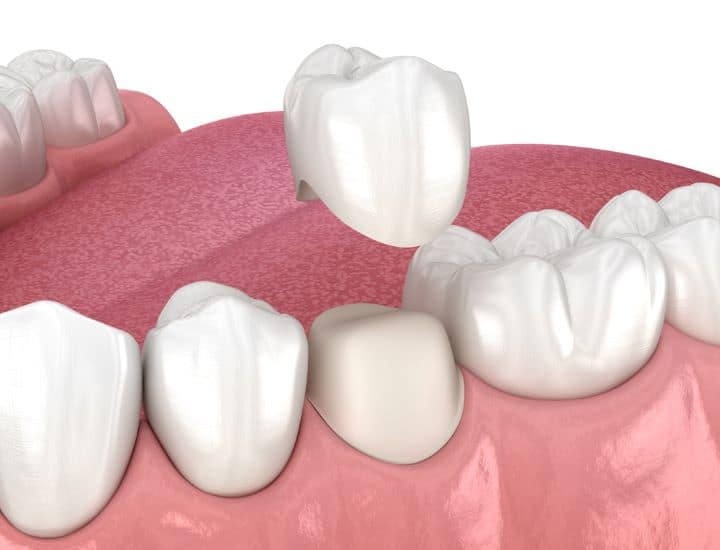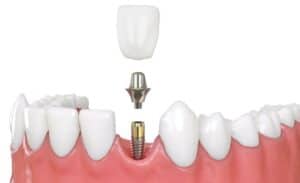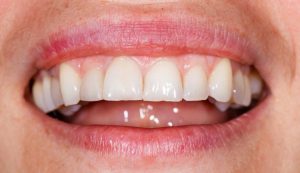Everyone wishes for a beautiful, straight smile but only a few people are blessed with such perfect teeth.

Fortunately, children and adults alike can now opt for a variety of orthodontic treatment options that are used to keep your teeth in order, like braces.
What are dental braces?
Dental braces are devices that are cemented to your teeth and that help gradually shift your teeth, particularly if they are crooked or crowded teeth to move the teeth to their new positions. In simpler terms, braces help straighten teeth.
Braces typically cater to children and teens, but adult braces are now gaining rapid momentum as well.
It is reported that one in five of all orthodontic patients in the United States are over the age of 18.
Type of braces
Not too long ago, you’d only be able to find one type of dental braces – metal braces – readily available in the market, but that’s no longer the case.
Several different types of braces exist today, especially used to correct several types of alignment-associated dental problems.
With a wide variety of styles and material options to choose from, you can now decide to start your treatment with a dental device that is best suited for you or your child.
Your dentist will refer you to an orthodontist who can work with you to create an ideal treatment plan for you. Duration of treatment may differ from person to person.
Traditional Metal Braces / Traditional Braces
There is no one-fits-all rule when it comes to braces. Braces come in all shapes, sizes, and forms.
However, out of all the types of braces, metal braces are the most common type. They, as the name suggests, are made of metal and are the cheapest and fastest option for patients.
Traditional braces are made of metal pieces, which are glued to your teeth and connected with archwires. The archwires are connected to the brackets using tiny elastic bands known as ligature, rubber bands, or o-rings.
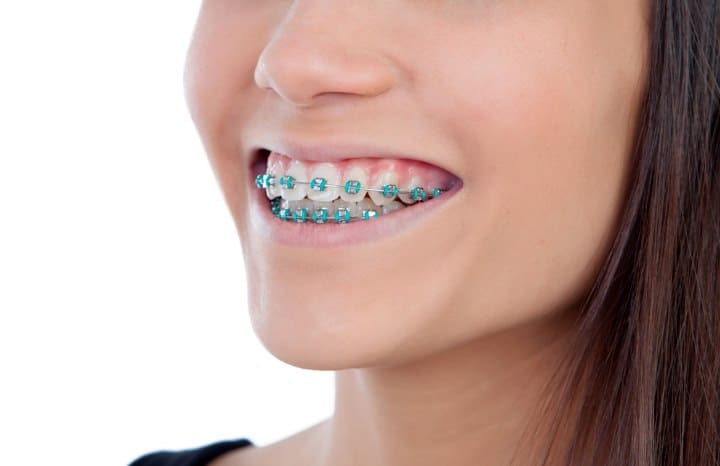
Teeth may move along the shape of the archwire fitted into the metal slot to straighten your teeth and their roots.
As your orthodontist tightens the braces, the wire applies force on the teeth and thereby, will gradually move teeth into their desired positions.
Throughout the treatment, your teeth are constantly being moved into an “ideal” bite by your braces. Additionally, your teeth and jaws are also persistently at work with each other.
Orthodontics makes use of rubber bands or metal ties to connect the brackets on the braces. In turn, the braces put pressure on one side of the archwire that allows bone on the other side to “bend”. As a result not only does the tooth move, but new bone also grows in behind.
Although these types of braces are affordable and fan-favorite, they are also the most noticeable type.
As patients often complain of feeling self-conscious in clunky metal braces, dentists have now begun to use attractive colored bands over the braces to make them more aesthetically pleasing
How do braces work and move teeth?: Brackets, Archwires & Elastic bands
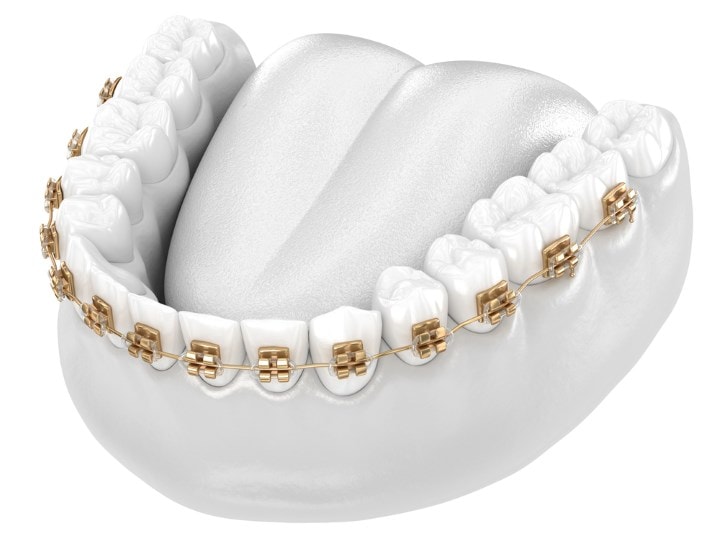
Metal braces consist of two major parts, as mentioned above – brackets affixed to the front of the teeth with a wire passing through its slot, known as the archwire.
Brackets are foundational pieces of any metal braces setup. They are bonded onto the patient’s teeth to last until the entire orthodontic process is completed. They are small square metal pieces and are often the first step to putting braces on.
You may typically find stainless steel brackets, but other materials can also be offered like ceramic, cobalt chromium, gold, plastic, and even titanium.
Stainless steel is a hit among kids as it can be used in different colors to decorate their braces.
They would not be able to shift your teeth to their new positions on their own. Archwires do a majority of the load-bearing during the braces treatment. Combined with the wire and bands, they will move the teeth at the appropriate angle and direction.
At times, they may come loose and your orthodontist will have to secure it again.
Throughout the process of braces, the archwire will be removed and exchanged for a new one, ensuring that they are changed as your teeth gradually realign.
Braces may consist of bands, a thin metal ring that aids in securing the orthodontic attachments to a tooth. Elastics apply additional force in precise directions so that they correct your bite, alignment of teeth, and teeth spacing.
Ceramic braces
Ceramic braces are very similar to traditional braces because of the way they work.
They are made up of composite materials that come in varying degrees of transparency. These are great for mimicking the natural color of your teeth, so these braces look like your own teeth. They may be a favorable option for working adults.
While they make up for the cosmetic shortcomings of metal braces, they also do not compromise on quality and durability.
They are incredibly durable and also less painful on your gums and cheeks as compared to metal.
Not only are these braces less noticeable than metal braces, but they are also just as effective at achieving the movement of the teeth into the correct positions. They can treat a wide range of teeth alignment issues, including some severe cases of underbites and overbites.
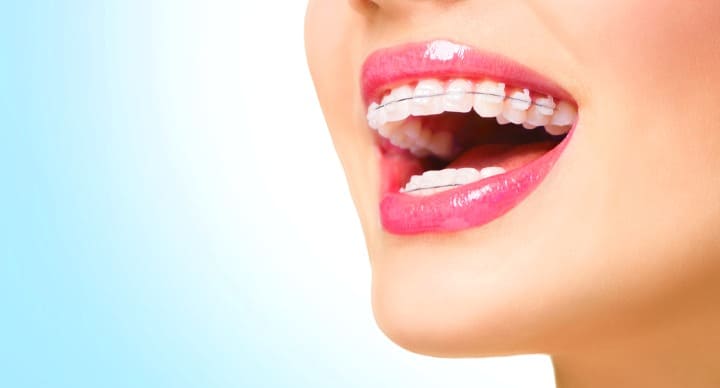
On the downside, these “clear” braces are typically more expensive than conventional braces and can also stain pretty easily. Some users have even reported that with these braces, the elastics became discolored very quickly. This could cause the discoloration of your teeth as well.
Self-ligating braces
One braces type that has been gaining rapid popularity is the self-ligating braces.
Self-ligating braces use a built-in open-and-close door mechanism, which is a unique bracket design developed recently. The ligation method is vastly different from conventional braces.
In the self-ligation system, they use the door mechanism to secure the archwires to brackets instead of elastics.
Due to this, these braces are known to produce results much quicker as the teeth can move on their own without monthly orthodontic readjustments.
Therefore, with these braces, you will massively cut down on repeated dental visits. Even during adjustments, these braces are much less time-consuming than metal braces. Fewer trips to your orthodontist means that you are also saving money, which is always a plus.
The process of getting these braces causes less friction and pressure on your teeth.
This allows you to experience greater comfort of wear than with metal braces. With the added benefit of comfort, they are a great fit for anyone whether a child or an adult.
One of the biggest gripes about metal braces that people have is that the ligatures or the brackets trap food particles in, making them difficult to clean. The absence of ligatures in this self-ligating system makes your braces much easier to clean and allows you to maintain your oral hygiene.
Lingual braces
They are similar to traditional metal braces are made of metal, but the thing that sets them apart is that, unlike conventional braces that are worn on the front side of the teeth, lingual braces are attached to the back of your teeth, making these braces less noticeable.
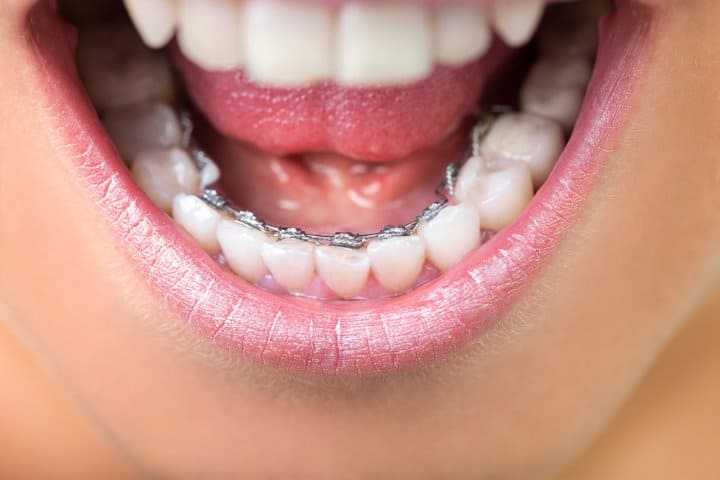
Since these braces are not readily visible on the outside and to other people, they are mostly preferred by young adults.
Adding onto their discreet positioning, the lingual brackets are also smaller than traditional braces, which people also find more comfortable and appealing.
However, these braces are less effective than metal braces. They take a longer time to achieve the desired results or tooth alignment. A longer treatment period also means higher costs, longer chair time, and more frequent office visits.
Due to the position of the braces and their contact with the tongue, they are also known to cause a lisp. They can cause pain to the tongue and the cheeks during movements. braces are harder to clean than regular braces and may not fix every tooth alignment issue.
Clear aligners
Often, people avoid getting any form of braces including traditional metal braces because of how indiscreet braces are and how cumbersome the overall orthodontic process is.
Clear aligners, often called “invisible braces” are a great modern-day alternative to metal braces.
They are a series of removable clear plastic trays that are made to custom-fit your teeth and are exchanged for a newer set every two weeks when your teeth begin to move into their newer positions. Over time, these braces align the teeth and bite.
With these plastic braces, you will be instructed to wear braces 20-22 hours a day. Your orthodontist will also let you know that you should only take your braces out to eat, drink, or clean your teeth. As a result, you do not need to restrict your diet with plastic braces.
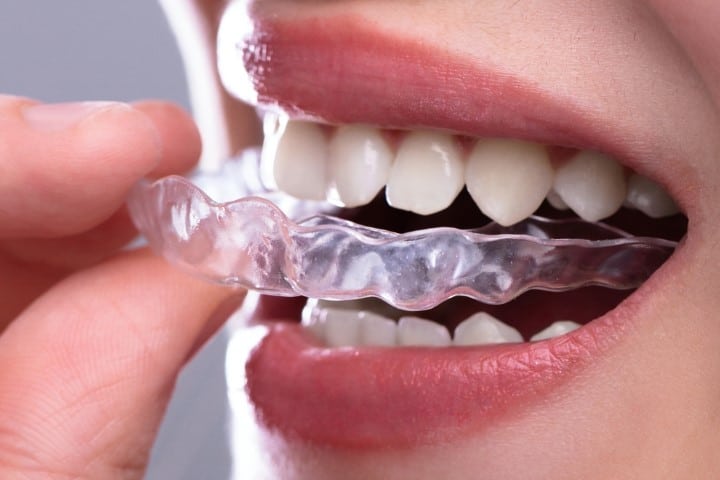
These invisible braces are also incredibly easy to clean. Metal braces can cause nicks and cuts on your cheeks and tongue due to their sharp metal brackets and wires. With the smooth plastic feel of these braces, you do not need to run into such hassles.
While both metal braces and aligners cater to a wide range of dental conditions, the latter are often not recommended for cases with severe malalignment. Since they are biomechanically inferior to metal braces, they apply inadequate forces required for complex cases.
They take longer to correct malalignment, meaning that the treatment duration and dentist fees are significantly higher. Luckily, most orthodontists offer payment plans that allow you to finance your removable braces more easily and at affordable rates.
Popular brands of these plastic braces in the market today include Invisalign®, ClearCorrect®, NewSmile®, and SmileDirectClub®.
Removal of braces
When your orthodontist decides that your teeth have adequately adjusted to their new ideal positions, your braces will be removed with a simple and relatively painless procedure. It will take less time to remove your braces than it did to put them on the first time.
The dentist will use a special tool to gently and safely remove the dental bonding cement that holds the brackets to your teeth. Once your brackets are detached, your braces are then taken off. Any remaining adhesive left on the teeth is scraped off. Finally, your teeth are polished.
After all the cement has been removed from your teeth, your gums may feel slightly inflamed and sensitive. However, this will subside on its own in a few days. After that, you will be able to enjoy the look of your stunning and straight smile.
End of braces treatment: Retainers
Your dentist will let you know that about a week or so after your braces are removed, you will be called in for a clean-up followed by retainer placement.
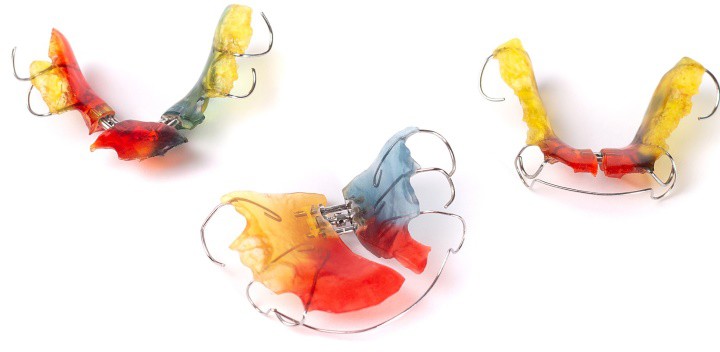
Not many are aware but this is a crucial step in your orthodontic journey.
Retainers are custom-made removable orthodontic appliances that are placed over your front and back teeth to prevent teeth from shifting into their old positions after braces. This period is known as the “retention period” of dental treatment.
Your braces keep your teeth in a straight position for years. So, when they are finally removed, the teeth are unstable and will try to move back to their previous positions. Therefore, they are used to provide additional anchorage to keep the teeth in their correct positions
The American Association of Orthodontists reiterates the importance of proper retainer use after braces. According to them, they are prescribed for two main reasons:
- To let the bone that holds the teeth rebuild after the teeth have moved
- To prevent the relapse of teeth to their older positions and maintain the healthy new positions of the teeth after active orthodontic treatment.
They will be custom-designed to fit your mouth. During the first six months following the removal of braces, it is mandatory to wear your retainers full-time. After this, you can wear them only at night if your orthodontist informs you so.
Taking care of teeth with braces
While braces can give you the beautiful smile you deserve, it is also inevitable that plaque and tartar build up around your braces.

Oral care and hygiene of your teeth must always be maintained to maintain healthy teeth and help prevent gum disease, tooth decay, and other dental conditions.
It’s important to follow a strict hygiene regimen to keep your teeth clean throughout the process of orthodontic treatment like traditional braces. Your dentist or orthodontist will give you a detailed list of instructions on taking care of your braces once you get them.
- Avoid foods that are not braces-friendly including sticky, hard, and chewy foods. Sticky or chewy foods like candies can get stuck on your braces, while hard, crunchy foods like nuts or popcorn can cause injuries or the device to break.
- Brush your teeth regularly with fluoridated toothpaste to prevent staining onto your teeth. Your dentist may recommend a special toothbrush to get into the nooks and crannies of your braces and clean your teeth.
- Floss regularly after brushing so that you can get food debris out from hard-to-reach surfaces like between your teeth.
- Regularly attend your adjustment appointments. Missing even one can delay your dental treatment and slow down the progress of your treatment. Make sure to also see your orthodontist for any breakages that occur.
Where you need braces and why to wear braces
Not sure if you should get braces?
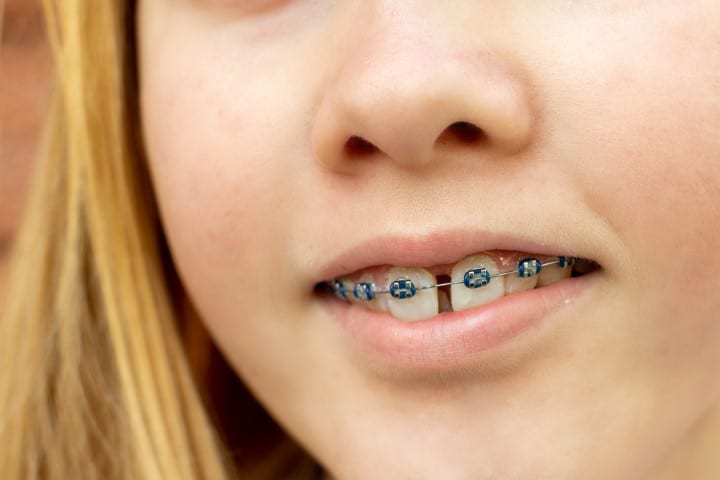
Here are some signs to look out for that tell you that you absolutely must see an orthodontist immediately for a braces consult.
- Crooked teeth
- Crowded teeth
- Malaligned teeth when your mouth is at rest
- Frequent or habitual biting of your tongue or cheek
- If you have speech difficulties
- Irregularities of the teeth like an underbite or overbite
- Untimely loss of primary or baby teeth (either earlier or later than normal)
- If your adult teeth came in late
- If you have difficulty chewing food
- Extra teeth or missing teeth
- Intense clicking or pain in the jaw especially when you wake up
- Breathing through your mouth
Summary
Braces are specialized dental appliances that help move your teeth to their correct and desired positions.
They are not only key players that align and reposition teeth but also give you a properly aligned jaw and an overall elevated appearance.
At the end of the treatment, you will receive a retainer that needs to be worn regularly to keep your teeth straight for longer.
Braces work differently for everyone, so contact your dentist to receive a custom treatment plan for you.
FAQS
- Can ceramic braces be used to treat an overbite?
An overbite is when the upper teeth protrude beyond the lower teeth. Ceramic braces can correct the same problems as metal braces including overbite. However, they can only fix an overbite that is caused by the patient’s teeth being poorly positioned and not due to jaw problems.
- When are clear aligners a good option?
Braces and clear aligners are both suitable for correcting all sorts of malalignment, however, the latter works best for mild to moderate problems. If the alignment problem is not a severe issue and the patient desires a discreet treatment option, clear braces is the way to go.
- Do lingual braces hurt?
While metal braces can cause injuries to your cheeks and lips due to their constant friction, lingual appliances may cause slight irritation to your tongue due to their close contact with it. Your orthodontist will provide special instructions for aftercare of your lingual metal braces.

